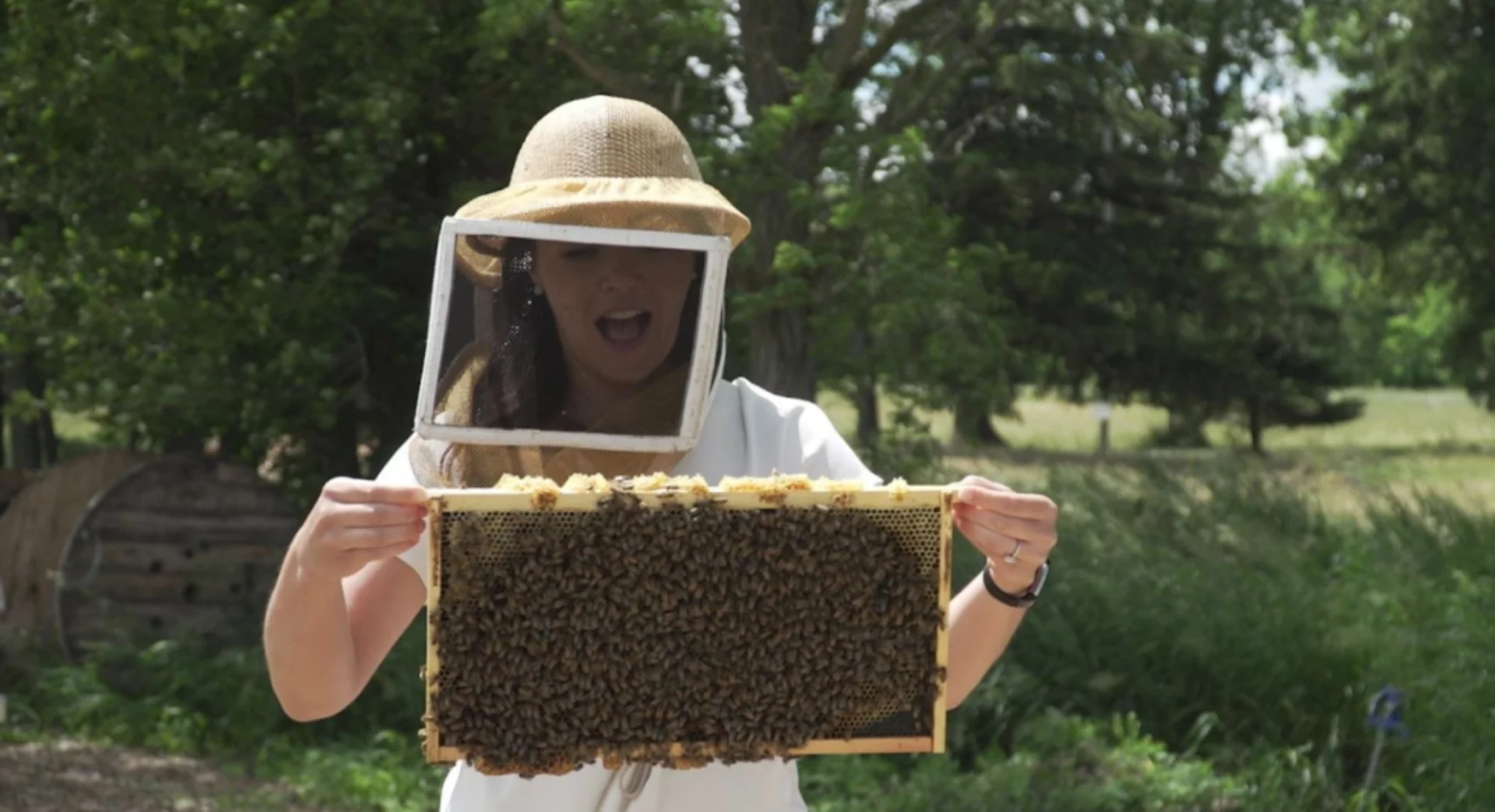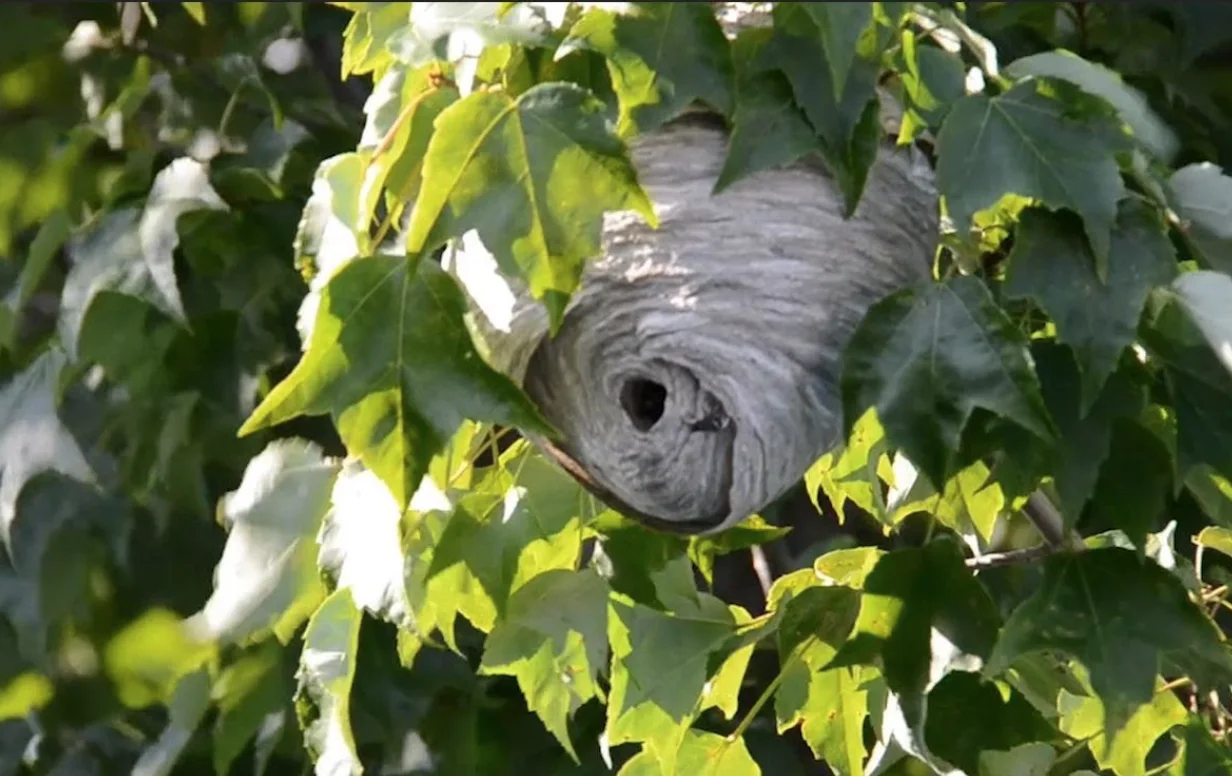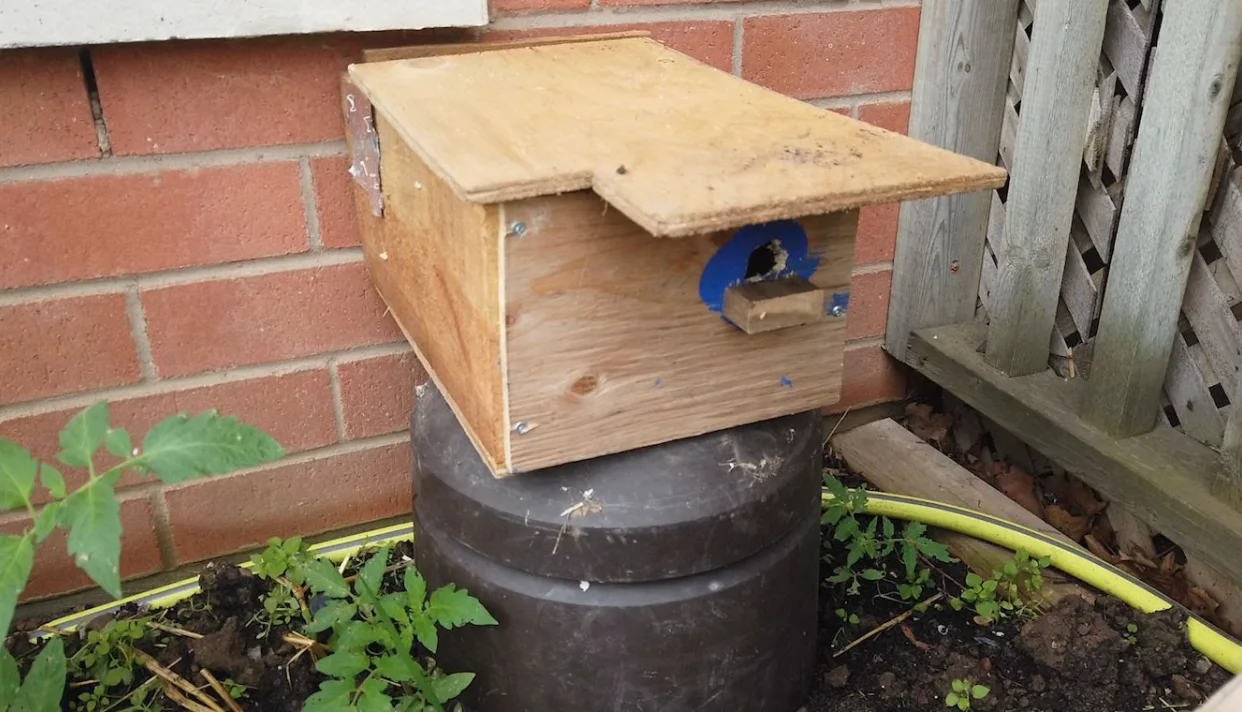
How to properly remove a beehive or wasp nest
Expert advice on everything you need to know about the beehive or wasp nest on your property
Bees and wasps swarming around your property may be a buzzkill during the summer months, however, they have important work to do.
If you find a beehive or wasp nest on your property, just breathe… there's no need to panic. I had the chance to visit a bee farm in Burlington, Ontario to talk with beekeeper David Stotesbury on some best practices when removing hives. Scroll down below to read my Q & A.
Question: First let's set the scene, I am all about saving the bees -- but a wasp - that should be terminated from my yard, right?
Stotesbury: Well, wasps have a pretty bad reputation. But these are incredibly important for the gardening community. Wasps are predators, and they will help control the tent caterpillar population, slugs and beetles too. Wasps have a brutal sting, but they have a positive upside when it comes to keeping insect populations under control. They are also pollinators -- not as efficient as a bee, but they pollinate as well! So perhaps think twice about eliminating the wasp nest.
Question: How do I know if it's a beehive or a wasp nest?
Stotesbury: You need to look at the nest structure because they will be made of different materials. Honeybees will be made out of wax; they typically live in cavities, usually in trees, although they can nest in other places. And now the wasp and hornets tend to make paper structures. They will take fibres off of wooden doors or trees and use their saliva to build these paper structures. Also, honeybees actually have hairy eyeballs. You won't be able to see it without a microscope, but that is another way to tell them apart.

Courtesy: Rachel Schoutsen
Question: Okay, so the goal is to keep these hives so the populations can thrive. However, I don't really want it hanging over my garage or back deck, so is moving it into the forest down the road okay?
Stotesbury: Good thought, but no. These are territorial insects. So removing one of their nests and introducing it into a new piece of land, typically what happens is you are just moving one wasp's nest into the territory of another wasp. So you kind of are doing a bit of a double negative!
Question: So what would be the right approach to removing the nest or hive?
Stotesbury: This is where I say call the expert. There are always opportunities for an expert to move in, collect, and properly relocate. Removing a nest or a hive should be the last resort -- you know, if it's in your BBQ or if you have children around the home or someone with an allergy.
Question: If I choose to live with the hive in my yard how can I reduce the chance of them stinging me or my family?
Stotesbury: You want to give them distance. Stringing insects are the most aggressive and defensive around their hive. They can actually feel our vibrations about 7 metres away. So keep away from the hive, and chances are they won’t want to bother with you.
Question: I’m pretty lucky, I have never had a hive set up on my property. So how can I keep it that way?
Stotesbury: Yes, this really is the best way to deal with the situation. Stop it before it starts. Remember these insects are territorial. So I would recommend, as soon as the snow starts to melt, set up a paper hive. The insects will think something else already owns that territory and they will not want to build there.

Courtesy: David Stotesbury
Question: We recently had a Weather Network viewer shelter a bee nest on their property. They wanted to help the population and provide some protection away from the swarm. Is this a good idea?
Stotesbury: This is a cool shelter and a nice thought. However, I would not recommend this. In a lot of small colonies, you can run really quickly into thermoregulation problems. So closing a lot of these insects in -- on a hot summer's day -- if they do get out right in the glaring sun, all of a sudden, temperatures can creep up to the point where they can’t withstand that temperature. So while this is a cool structure, ideally there should be more open space.

Courtesy: Rachel Schoutsen
Safely managing bees and wasps are not only important for your family but also for the survival of the species. Across Canada, there are hundreds of native bees, wasps and hornets that help pollinate the food we eat. As the population continues to decline, education on their importance should be adopted by all Canadians.











